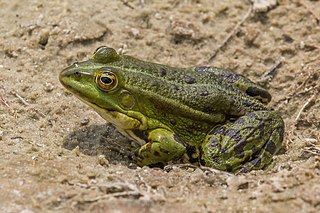
The marsh frog is a species of water frog native to Europe and parts of western Asia.
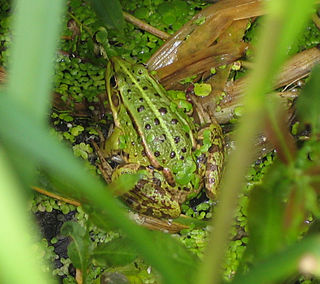
The pool frog is a European frog in the family Ranidae. Its specific name was chosen by the Italian herpetologist Lorenzo Camerano in 1882, in order to honour his master Michele Lessona.

The squirrel tree frog is a small species of tree frog found in the south-eastern United States, from Texas to Virginia. This is an introduced species in the Bahamas. Squirrel tree frogs are small frogs, about 1.5 inches in length as adults. There are several color variations, but most commonly they are green and look very much like the American green tree frog. They can also be varying shades of yellow or brown, sometimes with white or brown blotching.
The plains brown tree frog or Victorian frog is a species of frog in the subfamily Pelodryadinae. It is endemic to Australia. Its natural habitats are subtropical or tropical dry forests, rivers, freshwater lakes, freshwater marshes, water storage areas, ponds, and canals and ditches.

Agalychnis dacnicolor, the Mexican leaf frog, is a species of frog in the subfamily Phyllomedusinae. It is endemic to Mexico.

Scinax alter, the Crubixa snouted treefrog, is a species of frog in the family Hylidae endemic to Brazil.
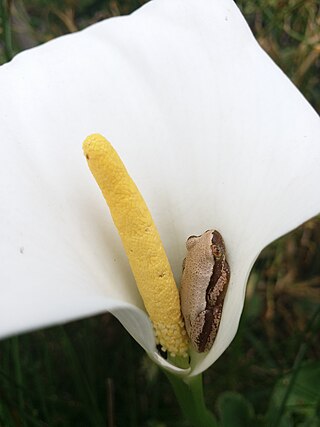
The Knysna banana frog is a species of frog in the family Hyperoliidae. It is endemic to South Africa.
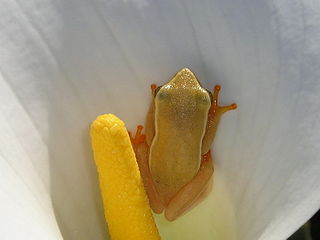
The arum lily reed frog, Horstock's arum-frog, arum lily frog, or Horstock's reed frog is a species of frog in the family Hyperoliidae. It is endemic to South Africa.
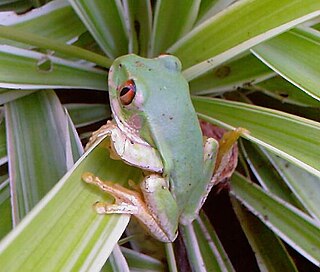
The Natal forest tree frog is a species of frog in the family Arthroleptidae, subfamily Leptopelinae, and is endemic to the eastern coastal area of South Africa. A typical tree frog, it has large eyes and a broad mouth. Its colouration is highly variable: Some may be bright green, others cream coloured, and some may be cream with olive-green blotches.

The humming frog is a species of frog in the family Limnodynastidae. It is endemic to Australia. Its natural habitats are temperate forests, temperate shrubland, Mediterranean-type shrubby vegetation, intermittent freshwater marshes, rocky areas, arable land, pastureland and open excavations.
Phrynobatrachus gutturosus, the Chabanaud's river frog or guttural puddle frog, is a species of frog in the family Petropedetidae. It is found in Democratic Republic of the Congo, Ivory Coast, Ghana, Liberia, Nigeria, possibly Benin, possibly Burkina Faso, possibly Guinea, possibly Mali, possibly Togo, and possibly Uganda. Its natural habitats are subtropical or tropical moist lowland forest, moist savanna, swampland, and intermittent freshwater marshes. It is threatened by habitat loss.
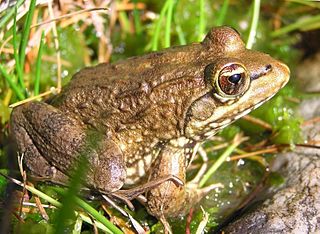
The Cape river frog is a species of frog in the family Pyxicephalidae named for the Cape of Good Hope. Formerly, it was placed in the family Ranidae. It occurs widely in the Eastern Cape and Western Cape provinces of South Africa. A newly described species, A. poyntoni, was split from this species in 2013.

The Italian pool frog is a species of frog in the family Ranidae. Found on the mainland of Italy and the Mediterranean islands of Sicily, Elba, Corsica and Sardinia, its natural habitats are rivers, swamps, freshwater lakes and freshwater marshes. It is not considered threatened by the IUCN.
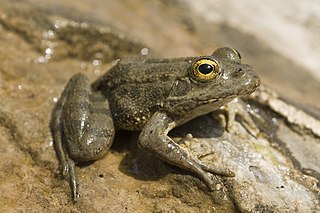
The Karpathos frog is a species of frog in the family Ranidae. It is endemic to the island of Karpathos, South Aegean Sea, Greece. The Karpathos frog is considered the most endangered anuran amphibian in Europe because its range is restricted to two small rivers in the north part of the island.
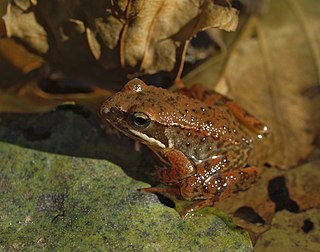
The Iberian frog, also known as Iberian stream frog, is a species of frog in the family Ranidae found in Portugal and Spain. Its natural habitats are rivers, mountain streams and swamps. It is threatened by habitat loss, introduced species, climate change, water contamination, and increased ultraviolet radiation.

The Daruma pond frog is a species of frog in the family Ranidae. It has two subspecies, P. porosus porosus and P. porosus brevipodus. It is endemic to Japan. The average size of males is 3.5 to 6.2 cm, while females are from 3.7 to 7.3 cm.

The Albanian water frog is a species of true frog and is native to Albania and Montenegro. As its common name suggests, it prefers aquatic environments. The Albanian water frog is an endangered species and known populations are currently in decline. Significant threats to its habitat are presented by pollution and by drainage of wetlands, and a more direct threat is the aggressive collection of the species for commercial purposes.
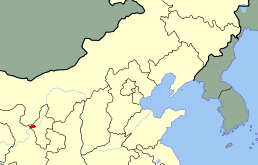
Pelophylax tenggerensis is a species of frog in the family Ranidae. It is endemic to China. It is recorded from Shapotou and Shenjiatan, Yinnan Prefecture, Ningxia Hui Autonomous Region, along the banks of the Yellow River at the edge of the Tengger Desert, China.

Kurixalus idiootocus is a small species of frog in the family Rhacophoridae. It is endemic to Taiwan and is commonly known as the temple tree frog. Its natural habitats are subtropical or tropical moist shrubland, seasonally wet or flooded lowland grassland, freshwater marshes, intermittent freshwater marshes and irrigated land. It is listed as being of "Least Concern" by the IUCN although there may be some destruction of its habitat.
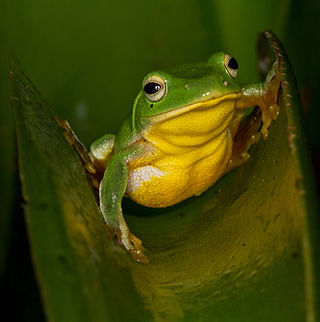
The Taipei tree frog is a species of frog in the family Rhacophoridae. It is endemic to central and northern Taiwan. It is a medium-sized tree frog; females are 4.5–5.5 cm (1.8–2.2 in) in snout-vent length, and males are slightly smaller 3.5–4.5 cm (1.4–1.8 in).



















